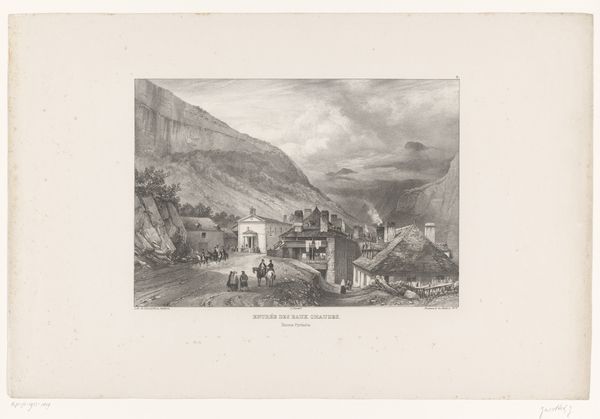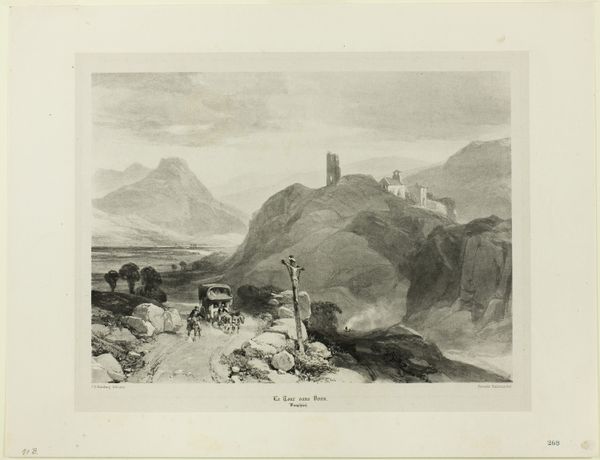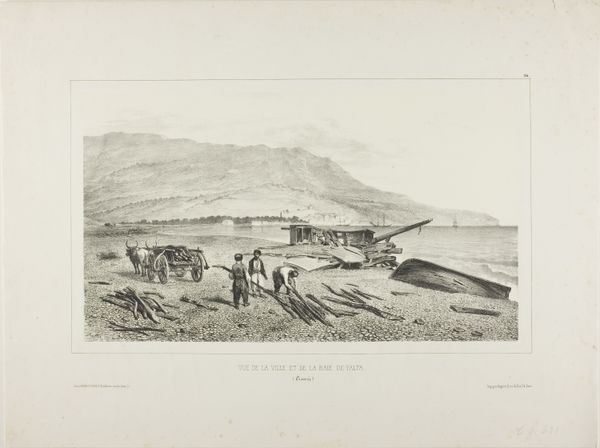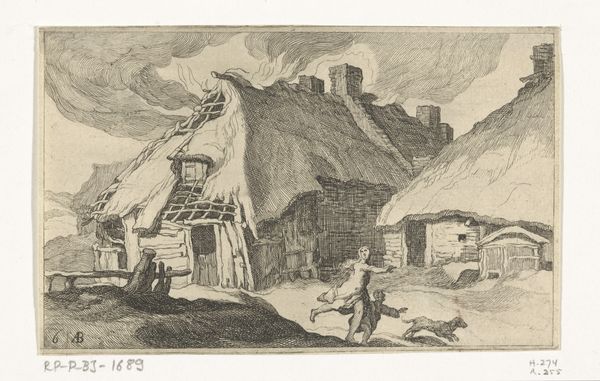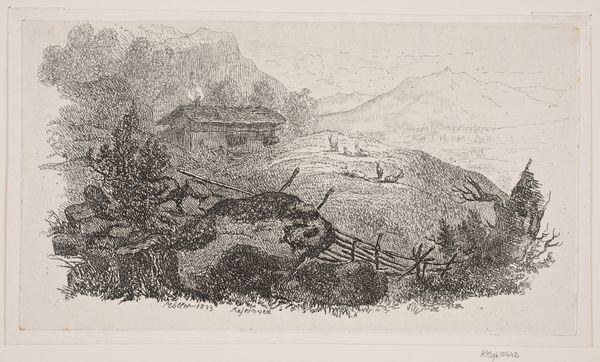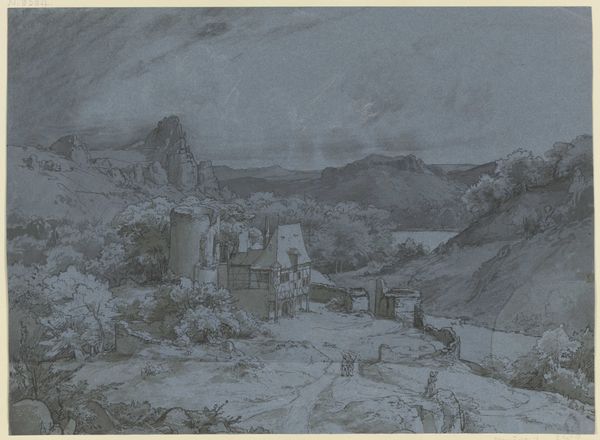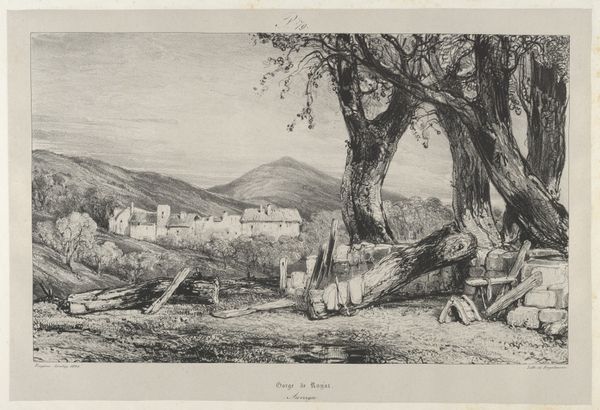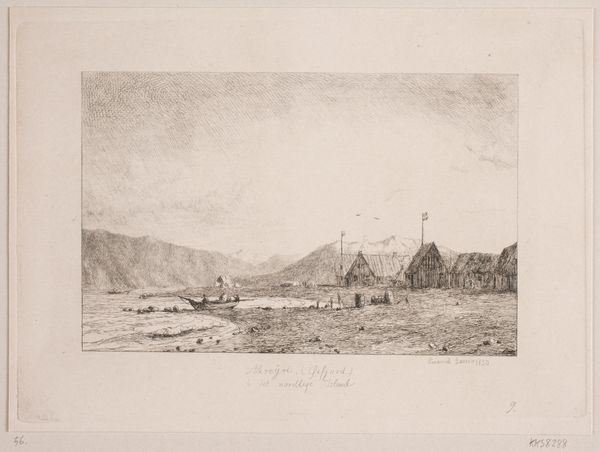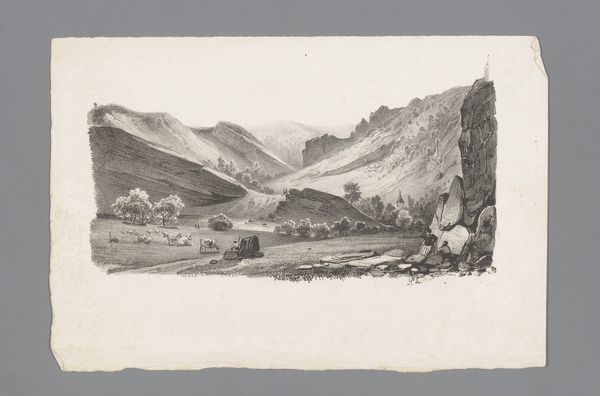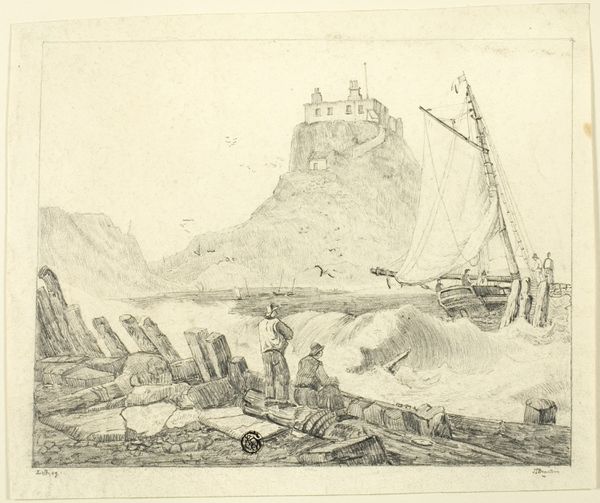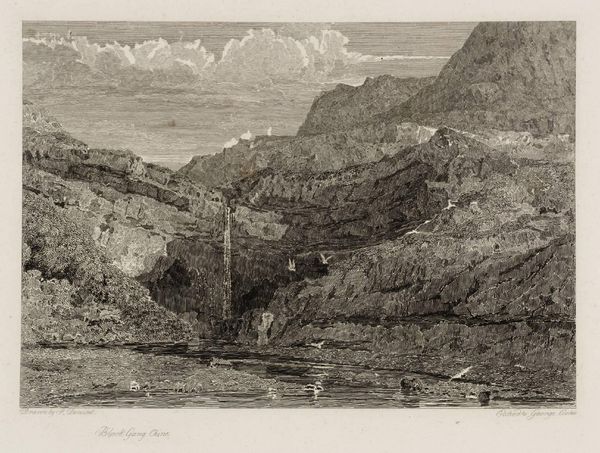
drawing, print, pencil
#
pencil drawn
#
drawing
# print
#
landscape
#
cross
#
pencil drawing
#
romanticism
#
pencil
Dimensions: Sheet: 21 3/16 × 14 5/16 in. (53.8 × 36.3 cm) Image: 10 1/4 × 13 7/16 in. (26 × 34.2 cm)
Copyright: Public Domain
Editor: This drawing, “Cross of the Village of Bains au Mont-Dor,” created by Eugène Isabey in 1831 using pencil, portrays a humble village scene dominated by a monumental stone cross. There's something quite arresting about the way the cross is centered within such an ordinary, almost banal setting. How do you interpret this juxtaposition? Curator: It's important to understand that Isabey was working within the Romantic tradition, a movement deeply interested in the relationship between humanity, nature, and history. The cross isn't merely a religious symbol, but also a marker of communal identity, of rootedness. Notice how it’s situated within the landscape. The dramatic mountain looming in the background amplifies the scale, placing the village and its symbol within a much larger historical and spiritual narrative. Who does art represent or what purpose does it fulfill when placed in public like this? Editor: That’s fascinating! So, the cross functions almost as a claim of ownership or a visible assertion of a certain culture, declaring that this place has history. Curator: Precisely! The public function of art during the Romantic period frequently involved the assertion of cultural values. The cross, in this case, represents the historical and religious underpinnings of rural French society. Do you notice anything else about how the village structures seem almost dwarfed? What impression is left when seeing a cross larger than their buildings? Editor: That the community places an extremely high emphasis on religion and is extremely devout? Curator: Perhaps; but is there any sign or hint in the piece to the true importance it held? Editor: It’s an idea that I still need to meditate upon! Curator: That's precisely what great art is all about – posing those critical questions.
Comments
No comments
Be the first to comment and join the conversation on the ultimate creative platform.

